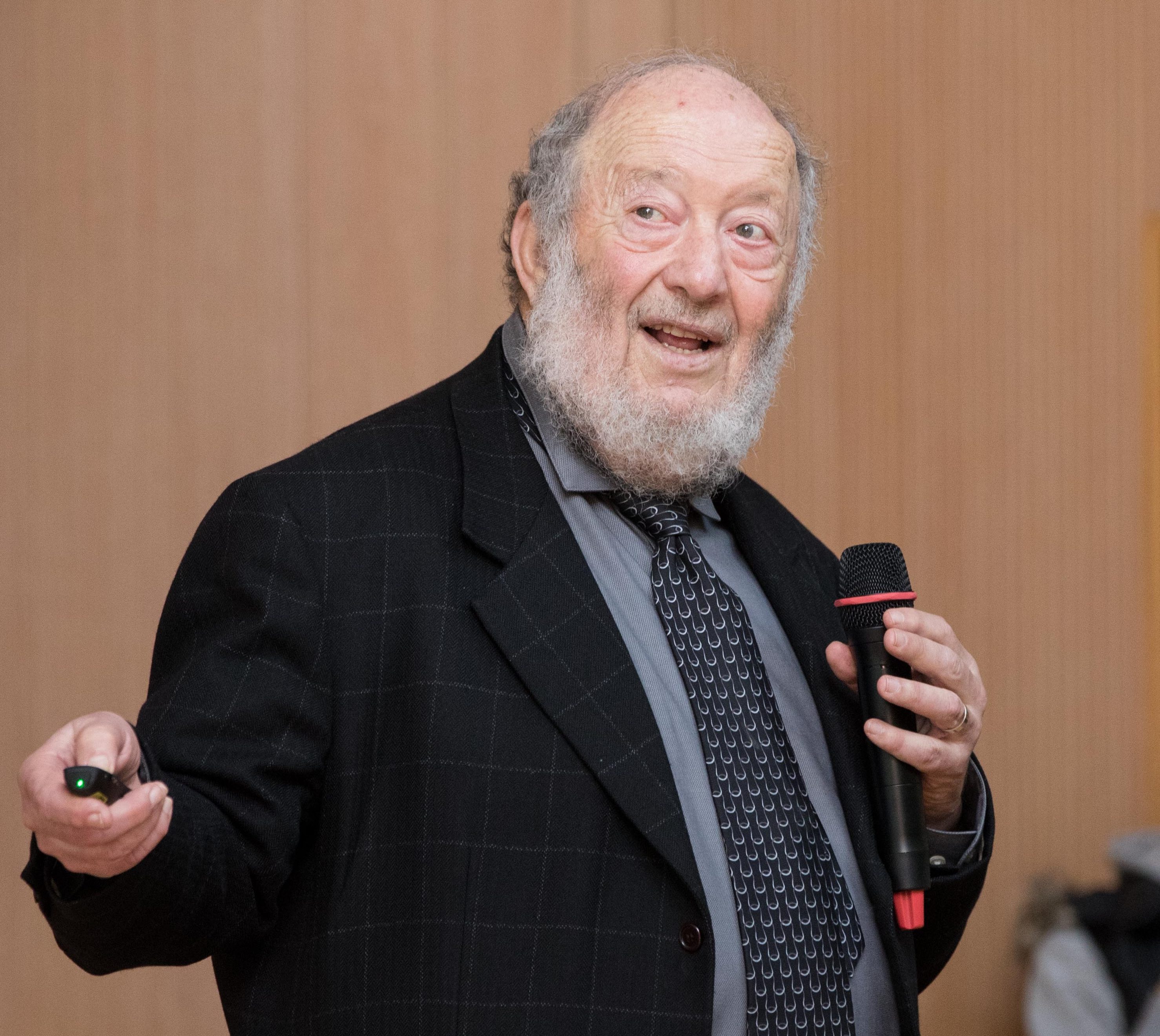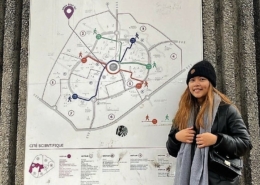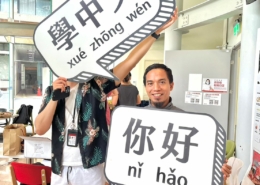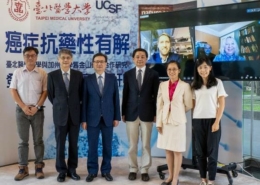Four surprising insights from a life in the lab
Stanford stem cell research pioneer shares advice with students
The circular conference hall was packed for Stanford University’s Prof. Irving Weissman’s talk on Normal and Neoplastic Stem Cells: Biology and Clinical Translation. But there should have been laughter when he opened by saying, “Stem cell biology is very simple.”
The crowd didn’t know that this eminent researcher would take off at a run, recapping dozens of complex findings since 1988, when his team published on the first isolation of a body stem cell—the blood formingstem cell in mice, and then a few years later the human blood forming stem cell as tested in irradiated and immune-deficient mice that had been grafted with human fetal blood forming tissues.
An early slide playfully said In vivo veritas [In life is truth] – a pun on the Latin in vino veritas, or “in wine is truth.” Prof. Weissman has spent nearly 60 years chasing truth in labs, leading to results in the 1960s that enabled human organ transplants.
Yet there might have been seriousness in the pun as well. Because live stem cells are infinitely more useful than dead cells often stored for research, he urged researchers and funders to maintain live cell lines for future experiments.
Growing up in Montana, he learned research skills early in a pathologist’s laboratory, then chose Stanford medical school because its program allowed half-day clinical training that let him continue his research the other half of the day. This experience that led him to praise as “promising and unusual” TMU’s MD-MS and MD-PhD programs that offer the same dual expertise.
But he wouldn’t continue with two careers; he said no to the internship training that would have followed the MD degree so he could focus on research. (His advisors said he’d regret this. He doesn’t.) So he’s been chasing big questions in Stanford’s labs since the 1960s, eventually helping to test the Herzenberg cell sorter that made stem cell research possible when “we got pure blood-forming stem cells.”
These results showed huge potential, and he formed a company called SyStemix to sponsor testing that showed effective depletion of cancer and T cells from patient blood forming tissues. That led to a clinical trial in which women with widespread [metastatic] breast cancer were rescued from high dose potentially lethal chemotherapy with their own cancer-free purified blood forming stem cells rather than the conventional method that didn’t purify the blood forming stem cells from cancer-contaminated mobilized blood. That study in breast cancer patients led to incredible results: half of the patients rescued with unpurified mobilized blood died within two years, but those receiving cancer-free stem cells half died in ten years – results still unmatched by conventional therapies. Fifteen years later only 7% of the patients receiving mobilized blood were alive, but now, 20 years later, 33% of those patients rescued with purified stem cells are alive without cancer.
Don’t read the paper!
Although the talk kept the crowd rapt well into overtime with its vast scope and erudition, Prof. Weissman’s greatest contribution may have been his unexpected advice to TMU’s MD-PhD students.
His surprising first suggestion was: *Don’t* read promising scientific papers … at least not at first. Instead, look for papers with interesting titles – and stop at the title. Consider it a challenge to figure out what the authors were studyin, then design an experiment that would test what the title promises.
How would you do it? What kind of proof would be needed? What materials, what costs, what numbers? Once you’ve sketched out your own ideas for an experiment, only then should you go ahead and read to see what the authors did. Then compare the two approaches and learn from this to make better guesses next time – and to design your own experiments.
“To get to this point, you need some background” from classroom training, he said. “But you’re passive [in classes] – be active!” If you stop at the title, you have the real problem in front of you to solve. And at least one good, peer-reviewed answer is there to teach you when you read the rest of the paper.
This habit of independent inquiry is essential to scientific thinking. Universities must teach received wisdom because they cannot teach what hasn’t been discovered yet, and aren’t very good at asking students to think beyond what is known.
“You learn one thing and you’re overconfident: I fault medical education for that,” Prof. Weissman said. “Luckily, textbooks are found wrong quite often – but if their pearls of wisdom are unquestioned, students are not equipped to understand alternative approaches.”
The money or the lives?
Prof. Weissman’s second secret for research success was to “Think about how your discovery will help people – and this means that you refrain from commercializing it right away.” Don’t take the money and run toward another research direction, he said, because no one else can do as good a job of developing the potential of an idea as its discoverer, who’s already spent years on that idea.
“The person best suited is the person who made the discovery; they should carry it on toward practical applications,” he said. “I know people who had an idea in 1960 who are still working on it,” mining those topics with downstream questions and developments.
“All applications make money for somebody. But academics stop and hand theirs to businesses too soon, in part because of the huge costs involved: from one to three billion dollars” is invested in each successful drug, Prof. Weissman said.
“That’s why drug companies are amortizing failures on the backs of their successes” by making business decisions to protect their winners at all costs, he said. This includes blocking promising new approaches, such as the breast cancer cell therapy trial that was shut down and effectively buried by its big-pharma buyer for 12 years.
So while businesses must put profits first, scientists can remain faithful to their ideas. “So far everything I’ve discovered has worked – because we stayed with it,” he said. “When we tried a novel antibody therapy in non-human primates, it burst their red blood cells. But we kept at it, made another antibody to the same cancer target, and now it is in late phase clinical trial for humans.”
His own career echoes this, he said: from an idea in 1975, “it took a long time” to bring this to fruition. He created the SyStemix company “because no one else wanted” this idea. But after losing the promising breast cancer idea, and many other blood stem cell applications to a big pharma company, he didn’t stop fighting.
“It’s taken 12 years to get back the cells antibody forming cells that made antibodies to isolate pure blood forming cells; I gave away stock and helped raise 200 million dollars for our Institute of Stem Cell Biology and Regenerative Medicine at Stanford, and our med school/hospitals/university have established a novel facility to purify blood forming stem cells for all of the applications we wished to test” Prof. Weissman said. But meanwhile, he said, fifteen thousand women with metastatic breast cancer keep dying each year that could be saved by this cell therapy. “That’s why you want to keep business out of research until your findings will clearly make money for their shareholders. Then you can hand it over and it will move forward.”
Go where the action isn’t
Prof. Weissman’s third piece of advice also questioned conventional definitions of scientific success. He advised students to think less about chasing a new drug and think more about the problem they want to solve – and don’t be seduced by seeking a commercially viable solution.
“The money in the past century has been in small-molecule drugs, but they’re not where all of the action is,” he said. “In fact, they have greater potential to cause harm at other body locations and organ systems, even if they prove useful in other limited contexts.”
The economics of big pharma dictate that “it always has to start again” to get a winning product it can protect with a patent. “But small molecules are often toxic to normal cells, and because in cancers the targets of small molecules are proteins, and in a mutant cancer cells the amino acids can change, and the cancer cell with that change can be resistant to the drug. In fact, mutations are a sure thing, and in a cancer of over a 100 billion cells, a naturally resistant cell likely already exists.”
Because cell therapies present patenting issues that make big pharmaceutical companies hesitant to invest in them, he said, “No small molecule pharmaceutical company was in on the initial discovery of protein therapeutics, and no protein therapeutic company discovered a cell therapy. Each develops its own culture and how to make a business from its speciality. ”
Stem cell therapies are different because stem cells from healthy donors have the full collection of normal genes, so that they can regenerate a system that has multiple genetic errors. Immune cell therapies target whole proteins, and even some amino acid changes don’t remove the multiple targets on those proteins. That’s why they can address slow-growing mutations like those associated with cancers
Then Prof. Weissman had a question for his audience: he asked the students how they would choose their post-doc lab. One student said he’d look for one that does research similar to his expertise.
Wrong, Prof. Weissman said.
“Your postdoc is your last, best chance to start your career. So choose a program that produces many successful researchers – not a lab that has a Nobel-winning star or that specializes in your interest area. Otherwise, he said, it’s hard to judge what the lab can give you.
You’re not looking for bragging rights from a big name; you’re looking to get the good habits that have produced other successful researchers. Better to train in a “boring lab”!
TMU’s eminent Prof. Jacqueline Whang-Peng disagreed with this. The “mother of cancer research” in Taiwan said students should choose a program that both provides basics and gives some glamorous distinction – “because you need something impressive” to provoke interest in you during that next competitive job search. Prof. Whang-Peng is director of TMU’s Taipei Cancer Center, now under construction, and was the first female scientist at the U.S. National Institutes of Health in the 1960s.
Don’t sweat the job search
Prof. Weissman took a sunnier view, telling students that bioscience doctorates would surely get them a satisfying job in the field, because there are lots of good bioscience careers beyond lab and faculty positions.
He asked the students to guess the percentage of bioscience PhDs who cannot find jobs in their field of study. They didn’t volunteer any estimates, so he noted that a survey asked the same question. Given the great pessimism prevailing in higher education, he said, responses usually were upwards of 30%. The reality? The researchers found that only 1.5% of life science PhDs were not working in a field relevant to their training.
“So don’t think about going on to business school” if you’re not setting the world on fire with your research, Prof. Weissman said. “You’re not a failure” if you go to work in a patent office, for example, because “patent offices keep you close to research” – and you can play a very useful role supporting science there or in other government agencies, or other positions that require a knowledge of bioscience.
He told students that if they found their studies rewarding, they shouldn’t let fears of joblessness drive them away from science – there’s a career waiting, even if it’s not running one’s own lab or competing on the tenure track as a professor.
A corollary to this was his last piece of advice to the TMU students: If you’re not excited by lab life now, don’t plan on spending the rest of your life there. Many other opportunities exist, and they may not put as much strain on family life as the often 24-hour demands of scientific experiments.
But well into his 70s and still deeply involved in research, Prof. Weissman has no complaints: “It’s a good life. That’s the price you pay for all this fun.”
Name: Irving Weissman, MD
Education:
BS, 1961, Montana State University
MD, 1965, Stanford University
Present appointment:
Director, Stanford Institute for Stem Cell Biology and Regenerative Medicine
Director, Stanford Ludwig Center for Cancer Stem Cell Research
Prof. Pathology, Developmental Biology, Biological Sciences, Neurosurgery
For interviews or a copy of the paper, contact Office of Global Engagement via global.initiatives@tmu.edu.tw.






期許永續發展成為醫療產業新契機。-260x185.jpg)











